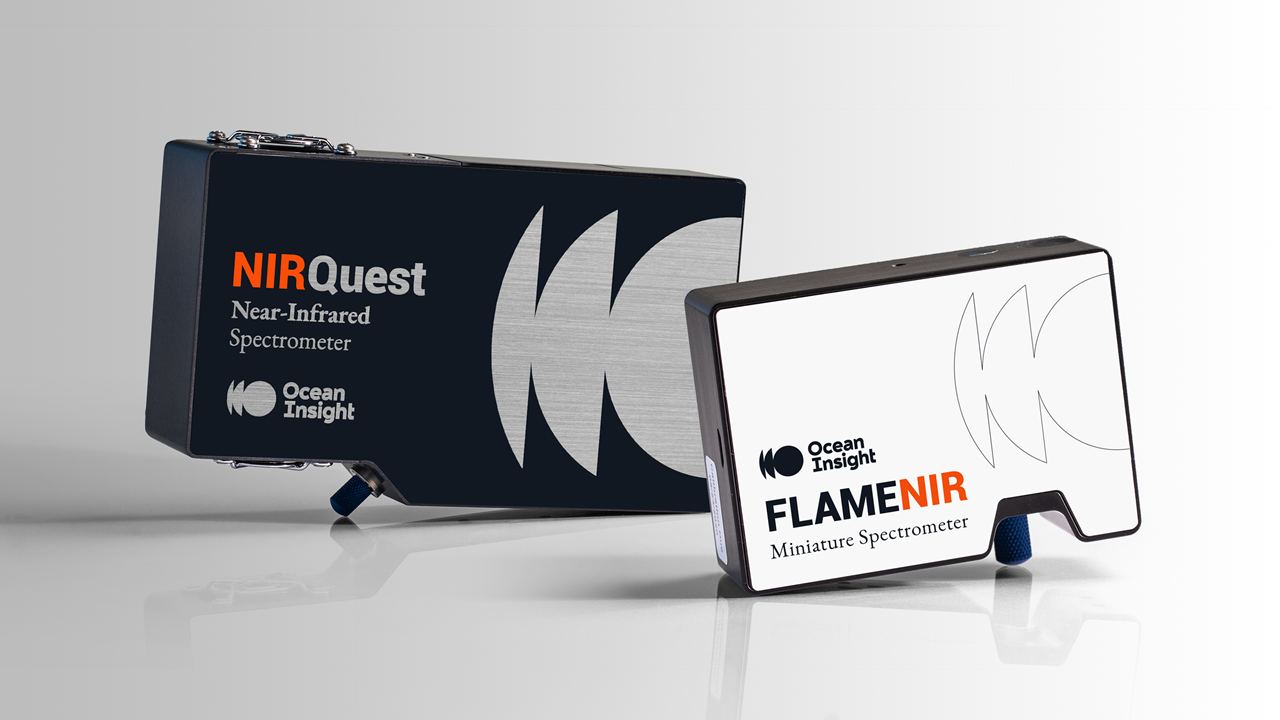Are you ready to explore how we can help you?
Our world-class experts are available to help find answers to your toughest questions.

Ocean Insight offers NIR spectrometers that meet price and performance criteria at every level. Find the right model for your application.
| NIRQuest+ | Flame-NIR+ | |
| Key Features: |
Enhanced optical bench and aperture design Higher sensitivity and lower limits of detection (LOD) |
Low power consumption Replaceable slits Minimal unit-to-unit variability |
| Type: | InGaAs array (cooled) | InGaAs array (uncooled) |
| Option(s) Available within this Wavelength Range: | 900-2500 nm | 970-1700 nm |
| Optical Resolution (FWHM): | ~3.1-7.6 nm | 10.0 nm (typical) |
| Preconfigured Models: |
NIRQuest+1.7 (900-1700 nm w/25 µm slit) |
FLAME-NIR+ (970-1700 nm w/25 µm slit) |
|
NIRQuest+2.2 (900-2200 nm w/25 µm slit) |
||
|
NIRQuest+2.5 (900-2500 nm w/25 µm slit) |
||
| Custom Configurations: | Yes | No |
| Applications: |
Moisture content of fruits and grains Plastics recycling Chemical concentration measurements |
Identification of pharma ingredients Monitoring of hydrocarbon extraction Fat content in edible oils |
| Compatibility with Accessories: | Yes | Yes |
| Dimensions (mm): | 182 x 110 x 47 | 89.1 x 63.3 x 31.9 |
| Price: | $$$$ | $$$ |
Download Guide to Modular NIR Spectrometers
Here are a few considerations to keep in mind when using a near-infrared spectrometer. NIR spectroscopy is a versatile and valuable technique for a wide range of applications.
One of the most exciting developments in NIR spectroscopy is its use in commercial processes. NIR is a good tool on which we can discriminate and make decisions about product quality.
Listen to our experts cover topics including the advantages of NIR spectroscopy, applications that benefit from NIR techniques, and where future NIR developments may take us.
High-sensitivity NIR spectrometers for applications within the 900-1650 nm, 900-2120 nm and 900-2450 nm wavelength ranges
FT-NIR spectroscopy offers a simple tool to identify different types of textiles, with distinct spectral features observed at wavelengths >1350 nm. This approach may be useful for authentication of natural and synthetic consumer textile products.
Read how NIR spectroscopy helps to deliver objective data the food and agriculture industries are using to maximize quality and efficiency.
Learn how spectroscopy can be used in plastics recycling to identify and sort plastics with a high degree of specificity. Integrating spectroscopy into recycling streams can streamline processes by mitigating the need for some sorting steps.

Our world-class experts are available to help find answers to your toughest questions.